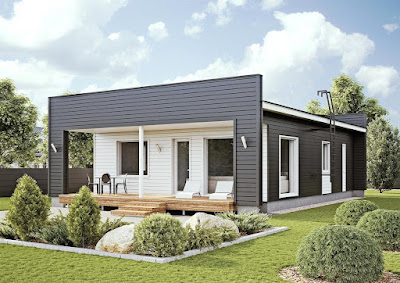How Do Transportable Homes Compare to Traditional Housing?

When it comes to the concept of housing, the traditional image of permanent structures built on-site has long been the norm. However, in recent years, the rise of transportable homes has introduced a new and innovative approach to housing solutions.
Transportable homes, also known as prefabricated or modular homes, are gaining popularity for their cost-effectiveness, flexibility, and quick construction time. In this blog post, we will explore the numerous advantages that Hamilton transportable homes offers over traditional housing, shedding light on why they are becoming a highly sought-after option for individuals and businesses alike.
1. Cost
One of the most compelling advantages of transportable homes is their cost-effectiveness compared to traditional housing. The construction of traditional homes often entails significant expenses related to on-site labour, material transportation, and potential delays.
In contrast, transportable homes can be more budget-friendly due to their streamlined construction process and the ability to prefabricate components in a controlled factory environment. This results in reduced labour costs and minimised material waste, ultimately translating to lower overall construction expenses.
In addition to the initial construction cost, transportable homes also offer long-term savings in terms of maintenance. The materials used in the construction of transportable homes are often selected for their durability and low maintenance requirements, reducing the need for frequent repairs and upkeep.
This cost-efficient approach makes transportable homes an attractive option for individuals and businesses looking to maximise their housing budget without compromising on quality.
2. Flexibility and Customisation
Another distinct advantage of transportable homes lies in the flexibility and customisation options they provide. Unlike traditional housing, which often involves a fixed architectural design, transportable homes offer a high degree of flexibility in layout and customisation.
Individuals have the opportunity to personalise their living space according to their preferences, whether it involves choosing specific floor plans and interior finishes or even incorporating eco-friendly features such as solar panels or energy-efficient appliances.
The modular nature of transportable homes allows for easy expansion and modification, enabling homeowners to adapt their living space to changing needs and lifestyles. This level of adaptability sets transportable homes apart from traditional housing, where extensive renovations or additions can be complex and costly.
Ultimately, the flexibility and customisation options associated with transportable homes empower individuals to create a living environment that truly reflects their unique vision and requirements.
3. Construction Time
One of the most significant advantages of transportable homes is the expedited construction time they offer in comparison to traditional housing. The traditional home construction process typically involves prolonged timelines, from site preparation to the completion of the structure.
In contrast, transportable homes Hamilton are constructed off-site in a factory-controlled environment, allowing for concurrent work on different components of the home.
This streamlined approach significantly reduces the overall construction time, making transportable homes an ideal choice for those seeking a swift housing solution. Whether for personal residence or commercial purposes, the quicker turnaround time of transportable homes can be especially advantageous in meeting urgent accommodation needs or adhering to project deadlines.
4. Quality and Durability
Addressing any misconceptions about the quality and durability of transportable homes is essential in understanding their advantages over traditional housing. Modern construction techniques and advancements in building materials have elevated the quality and longevity of transportable homes to rival that of traditional structures.
The controlled factory environment in which transportable homes are constructed ensures precision and quality control throughout the building process.
Furthermore, the materials used in transportable home construction are often selected for their durability and resilience, designed to withstand transportation and assembly with minimal impact on structural integrity.
This focus on quality and durability dispels any lingering doubts about the long-term sustainability of transportable homes, assuring homeowners of a sound investment in their living space.
Final Words
The advantages of transportable homes over traditional housing are clear and compelling. From cost-effectiveness and flexibility to rapid construction and quality assurance, transportable homes Hamilton offer a myriad of benefits that cater to the evolving needs of individuals and businesses in the realm of housing. As the demand for sustainable, efficient, and customisable housing solutions continues to grow, transportable homes stand out as a viable alternative that combines modern innovation with practicality.

.jpg)
Comments
Post a Comment